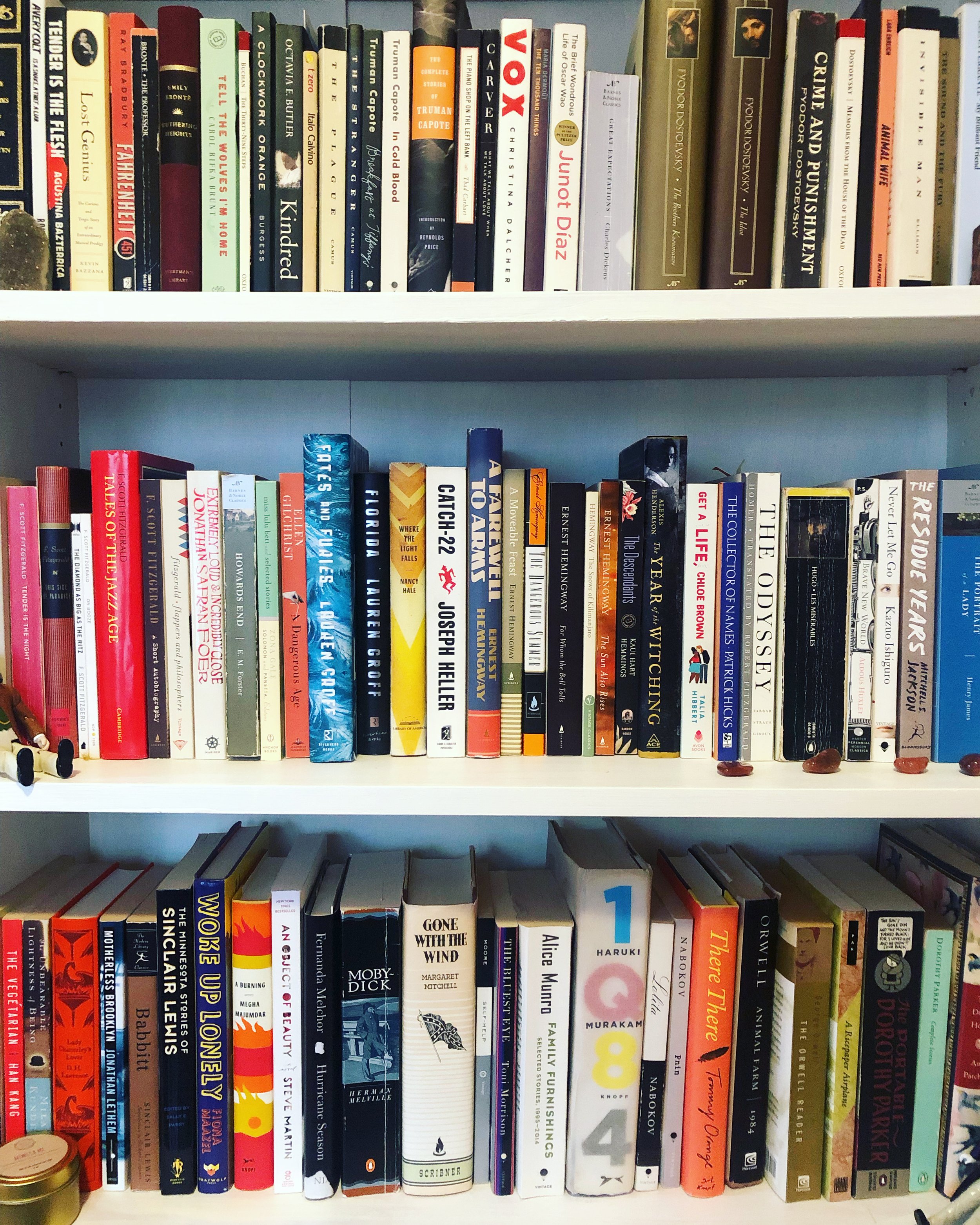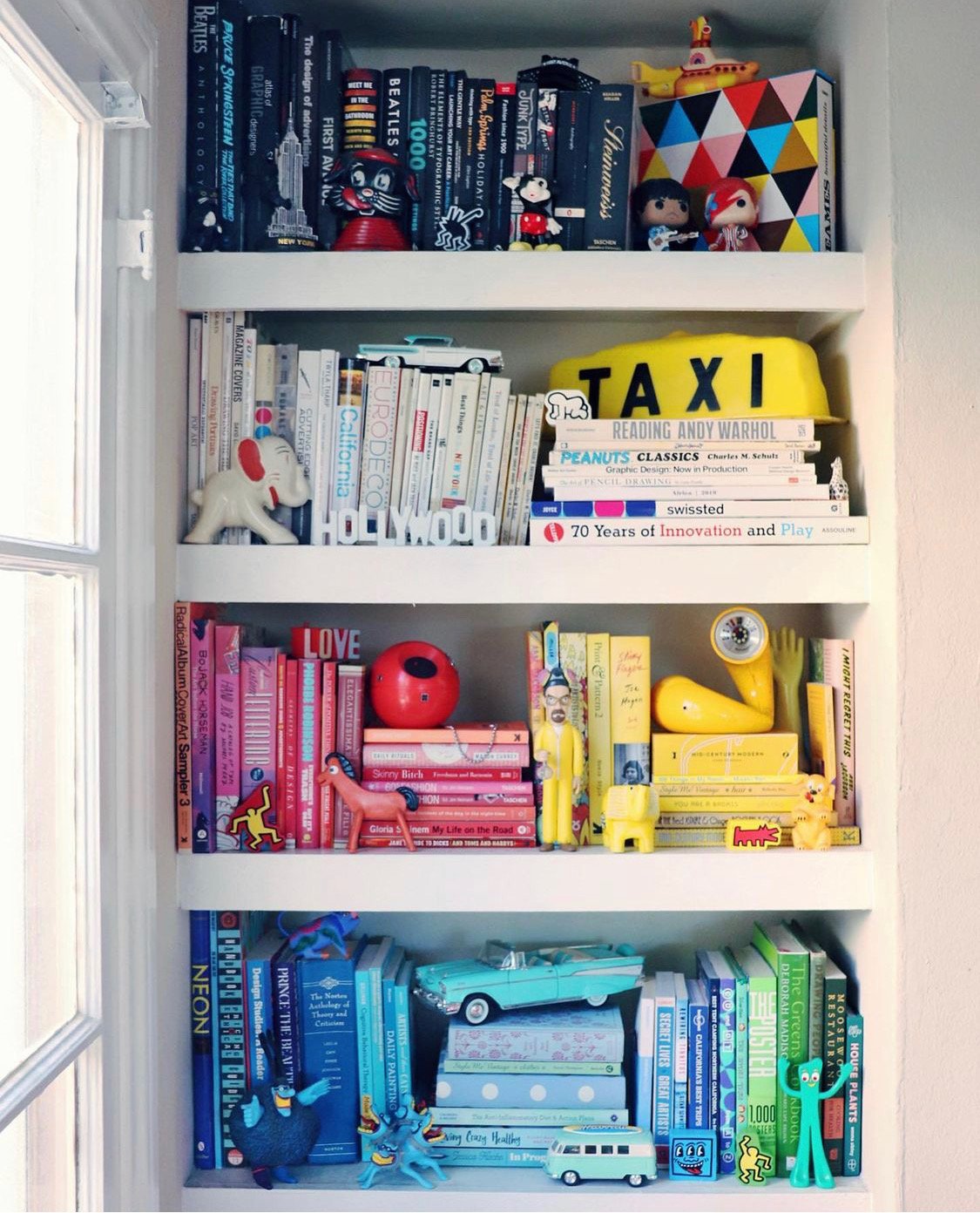How to Get (Re-)Organized
When I was kid, my favorite part of the year (okay, after piano camp every July) was back-to-school time. I was all about the notebooks, the folders, the new pencils, the clean covers and fresh pages. I still remember my high school planners and how dutifully I tracked my assignments and due dates in them. This love of organization continued into college, where I still had notebooks of different colors for every subject and a fresh supply of mechanical pencils. I learned how to apply this organized structure to my piano practicing, which for a time I tracked on a practicing app. When I was practicing nine hours a day for a big piano competition, I had a single-page spreadsheet that listed every day until the competition on the horizontal axis, and every movement of every piece on the vertical axis. I had to fill in each box for each day—an “X” meant that the piece had been properly practiced, and a check mark signaled that I hadn't had time to practice the piece (there’s only so much you can do in nine hours) but I’d at least played through it to keep the notes under my fingers. Practicing the same music every day can be monotonous (although—as I tell my students—if you’re practicing well, it shouldn’t be!), but having to record my work on that spreadsheet kept me going.
I’ve tried to maintain this organizational approach in my post-college adulthood. I try to keep separate notebooks for separate writing worlds: one for screenwriting, one for fiction, one for creative nonfiction, and so on. I also have specific notebooks devoted to specific long-form projects. However, as I write this, I couldn’t tell you which notebook is which. At some point in the past few months (or did it happen earlier?) I started writing down whatever I needed to write down in whatever notebook was closest, and now they are just big piles of pages that are spiral-bound together in no particular order, including everything from story outlining to meeting notes to class exercises. It’s been a busy fall to say the least—my screenwriting has been gaining some traction which is exciting and surreal, and I’ve been doing a fair amount of writing work that is unrelated to my main projects, including freelance editing, writing articles, judging scripts, and reading essays. It’s all starting to feel like a big hurricane of stuff that I’m afraid of forgetting about on any given day. This is all before considering that aside from my writing life, I am a full-time small business owner who uses spreadsheets galore to keep track of finances and piano students’ events and repertoire plans. Do you feel the hurricane spirals?
At least I know I’m not alone. Even Mozart once wrote: “Altogether I have so much to do that often I do not know whether I am on my head or my heels.”
If there’s anything I’ve learned from Wild Minds posts to date, it’s that creativity is not exactly super organized. It can be an experimental process, an exploratory process, a “have fun and see what happens” kind of thing, or maybe just a “power through this impossible work and soon you will feel light again” experience. But it’s necessary to hit upon a phase of organization at least somewhere along the way, right? If creativity starts with throwing stuff out of your mind, it ends after the stuff has been organized cohesively. I’d like to feel organized again, not only because my mind feels as discombobulated as my notebooks, but because I think my creative work is actually in need of my desk to be clean, my house to be in order, my calendar to be set, and my head to be generally on straight.
Unfortunately, I’m finding that getting organized after a period of disorganization is a little like trying to run a mile when you haven’t jogged for a few months. It’s hard. My organization muscles are weak from disuse. I’m lazy. Why bother? Also: it’s almost the holidays. Can’t we just make it through the final push of the next six weeks and revisit this topic in the new year?
No, because six weeks is a long time! And I don't want to feel steeped in chaos until January 1st, at which point I will feel even more deeply steeped in even more chaos.
So: I’ve spent the past few days immersing myself in content about organization to see if anything inspires me. (Sometimes it can be calming simply to envision things being organized.) I perused books by people like Marie Kondo and Martha Stewart, talked to fellow artist friends, and read about artists I wish I were friends with. I haven’t put any work into getting any more organized yet, but there are a few things that have been sticking in my mind—including little helpful tips, inspirational quotes, and big-picture techniques. This is a disorganized list of all of those things in case they can provide a bit of inspiration or practical help to you. And, who knows, maybe I’ll be referencing this on January 1st after all.
Desk Tips from Martha Stewart
Martha Stewart has this beautiful giant hardcover book aptly named Martha Stewart’s Organizing, and you should get yourself a copy to pull out any time you need some organization porn to help you fantasize about being perfect. The book is divided into three sections: “Organize Your Year,” “Organize Your Home,” and “Organize Your Routine.” Don’t you already feel more organized simply thinking of your life in these three categories?
Anyway, Martha has a couple of specific desk-related tips that stuck with me. One of them is about being a minimalist with your physical desk space. (I just counted, and I have no less than 21 books on my desk right now, which does not include stacks of unopened mail and writing magazines that I haven’t read.) Her tip is to clear everything off your desk except for true essentials (lamp, computer) and put everything else into a box. Keep this box within reach for about a week, and take note of how often you reach into the box for something. After the week is over, you can gradually return the must-haves to your desk and put the rest of it in storage.
Martha’s second tip is about computer desktops. She recommends taking 10-15 minutes each week to clean up your desktop and make sure files are staying organized. She also stresses the importance of treating your desktop as a temporary parking space—really not much should be there at all. (I will not even tell you how many folders and files are presently on my desktop.)
Perfection
Speaking of perfection, Marie Kondo is all for it:
…you will never get your house in order if you only clean up half-heartedly. If, like me, you are not the diligent, persevering type, then I recommend aiming for perfection just once.
Marie Kondo’s book The Life-Changing Magic of Tidying Up is about her KonMari Method of cleaning and organizing one’s home. But there’s a deeper transformative approach to this and a reason she refers to it as “magic”:
When your room is clean and uncluttered, you have no choice but to examine your inner state. You can see any issues you have been avoiding and are forced to deal with them. From the moment you start tidying, you will be compelled to reset your life. As a result, your life will start to change…Tidying is just a tool, not the final destination.
More on Tools
Marie Ricks wrote a book called Be Organized: Reclaim 90 Minutes of Your Day, Every Day (sounds good to me!). She writes about the three ways in which you prepare for a new organization project. These are tools, systems, and routines.
Tools are what you need to get the job done. Systems are your methods or techniques for performing the job. Routines are when and how you focus on the project at hand—the timing of your work. Carefully planning out the tools, systems, and routines that will be used with any organization project saves time and trouble.
Dare I say this can be applied to a creative project, too? Knowing your tools, systems, and routines from the get-go sounds like a good starting point to launch a larger goal—like writing a novel or creating a pitch document—in addition to keeping the bathroom clean. Although we tend to think of him as being a disheveled, disgruntled presence (I mean, have you seen his manuscripts?) Beethoven was very into his routines. He got up at dawn and made his own coffee every morning. Each cup of coffee was to have 60 beans, and he counted them himself.
The Visual Organizer
While I am a big fan of organizing by numbers and letters (my books are divided into genres and then organized alphabetically by author last name—as seen below on the left), some people need a more appealing visual. My designer/illustrator sister organizes just about everything in her life by color, including her bookshelves and iPhone apps:
Calendars
As this article says (for the business owners among us), it can be beneficial to look at your whole year and break your goals down into quarterly, monthly, and weekly goals to ensure the work gets done—but to be prepared to pivot when necessary, because life can be unexpected. Marie Ricks warns readers about this too: “Don’t get too comfortable in your organization routines; more challenges are inevitably on the horizon.” (Great!)
Martha Stewart recommends putting tasks into your calendar at the beginning of the year so that nothing is forgotten about. This seems like a lot to me (I’ll change the furnace filter and adopt a rescue dog when I feel like it, Martha!) but there’s something to be said for writing stuff down so that your brain doesn’t need to hold onto it. In fact, Daniel J. Levitin digs into the history of this in his book The Organized Mind, which demonstrates how research about the cognitive neuroscience of attention and memory can be applied to daily life.
Goals Are Bad?
In Atomic Habits: An Easy & Proven Way to Build Good Habits & Break Bad Ones, James Clear argues that goal-setting is not so great in and of itself, and that the area you really want to focus your energy on is systems. A few quotes worth pondering:
“It is so easy to overestimate the importance of one defining moment and underestimate the value of making small improvements on a daily basis.”
“Goals are about the results you want to achieve. Systems are about the processes that lead to those results.”
“The purpose of setting goals is to win the game. The purpose of building systems is to continue playing the game.”
Pare Down
You might have noticed that none of the books I’m referencing are specifically about the creative life. They really are about the nuts and bolts of actually getting your space, calendar, and brain organized. But something I noticed among all of these “organize your house”-type books is that they all start with the process of getting rid of stuff. Marie Kondo insists that the transformative practice of tidying up must start with discarding. Marie Ricks writes more bluntly that the first goal is to “purge half of all you own.” (!) Martha Stewart also recommends paring down belongings before anything else. Even Daniel J. Levitin writes about getting unnecessary information out of the brain so that you can focus on what matters. This struck me as interesting because getting rid of stuff is also a necessary step in the creative process.
Writers are often told to “kill your darlings” which means to cut unnecessary characters or storylines that we might have worked really hard on. My experience revising my first novel has mostly been cutting thousands of words and paring it all down to the essentials of the story. Editor Allison K Williams advises, “If you’ve written a very long piece, chop off the first 10-15 pages and send the next 10-15 pages to someone who doesn’t yet know the story. And if there are things they know from those pages that are already in the first 15 pages, cut them.” If you haven’t cut anything from your first draft, you probably don’t have a very strong final draft.
This seems to jive with what the organization experts are saying: if you haven’t gotten rid of a bunch of stuff, are you actually organized? Maybe the first step to being organized is cutting things from my to-do list altogether.
How about you? Are you good at saying no to keep stuff off your plate? Do you have any organizational tips? Or is disorganization a requirement of your creative process? Maya Angelou, for example, worked in hotel rooms: “I try to keep my home very pretty, and I can’t work in a pretty surrounding.” What kind of surrounding works best for your work? Is that the one you have?
Here are some file organization tips specific to screenwriters.
And some Marie Kondo inspo to kick off your magical tidying process.
But wouldn’t it be great if everything could fall into place with the snap of your fingers?
Read more Wild Minds posts here.





